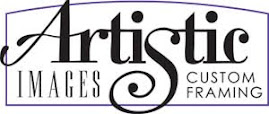Let’s talk about GLASS.
When you have something custom framed, chances are, a part of that framing package includes GLASS. Did you know you have more than ten options when it comes to glazing? Wow. That’s kind of mind-boggling, isn’t it? Well, let’s talk about some of those options.
Probably the most familiar types of glass to you are regular glass, UV glass and non-glare glass. These can be used to your advantage when you frame your artwork.
There is a lot of talk about conservation, acid free, archival and other buzz words whether you’re a scrap booker, a photographer, a collector or just someone who picked up on it somewhere along the way. All of these things are important considerations. But not all artwork requires conservation, or acid free, or archival, or UV anything.
Let’s say you have a poster you picked up at a concert and it’s pretty cool and it reminds you of the good time you had. You paid $25 for it and it was one of hundreds available. You want to hang it in your family room for a while and remember the fun you had. Something like this probably doesn’t require a UV protective glass.
On the other hand, it’s a really cool poster and you had a blast at this event. You know you’ll treasure this poster for a long time to come and when you look at it, you know you'll recall the really great time you had. (That’s why you’re getting it framed, after all.) Well, to avoid color fading, now you might want to consider UV glass. UV glass protects your artwork from 99% of the harmful, color damaging UV rays that come not just from the sun, but from all light sources.
Now, one of the really cool things about this poster is where you’re going to hang it. It’s going to look great on that wall in your family room, but you know from experience that other framed pieces hanging there reflect a lot of the light that comes in to this room. Here’s where the non-glare glass comes in. There are two types of “reflection control” glass we use in framing. One has UV protection, one does not. So, you want to preserve this poster and not fight with the glare. I would recommend going with the UV, non-glare glass. There are some limitations with this glass though, so we'll have to talk about those to see if this is still the best choice.
And we’re not done yet, can you believe it? This poster is really, really cool. You know you’re going to treasure it for the rest of your life. You’ve got the perfect spot for it and reflection could be an issue. The colors are outstanding and the design is the best and that’s what makes it SO cool. You just love looking at it. Well, we’ve got the perfect glass for you. We call it Museum glass. It is ultra clear, non-reflective and 99% UV protective as well. It has the highest light transmission along with the lowest reflection rating of any glass today. That just means that it almost looks like there is no glass there at all. To tell you the truth, Museum glass is my personal favorite. It is beautiful glass and I wouldn’t use anything else. There are never any issues with this glass... except that it is one more choice for you to make.
Remember in the beginning, I did say there were over ten different kinds of glazing for you to consider. So you can see, I’ve only scratched the surface. Most of these same choices are available in acrylic "glass" too. We'll cover those in a later post. But don’t worry. That’s why I’m here. I can help you make the best choice in the many, many choices you have to make when you have something custom framed. With a little bit of question and answer time, together we’ll come to the best choices for all of your art and objects.
If you would like to explore glazing options for your framed pieces, I suggest you check out the Tru Vue website. This is the glass I use on all of my framing projects. Armed with this information, you will be able to make the best decisions about your artworks.
Oh, and that really, really cool poster? It’s going to look terrific in that spot!
Tuesday, October 27, 2009
Subscribe to:
Post Comments (Atom)


No comments:
Post a Comment